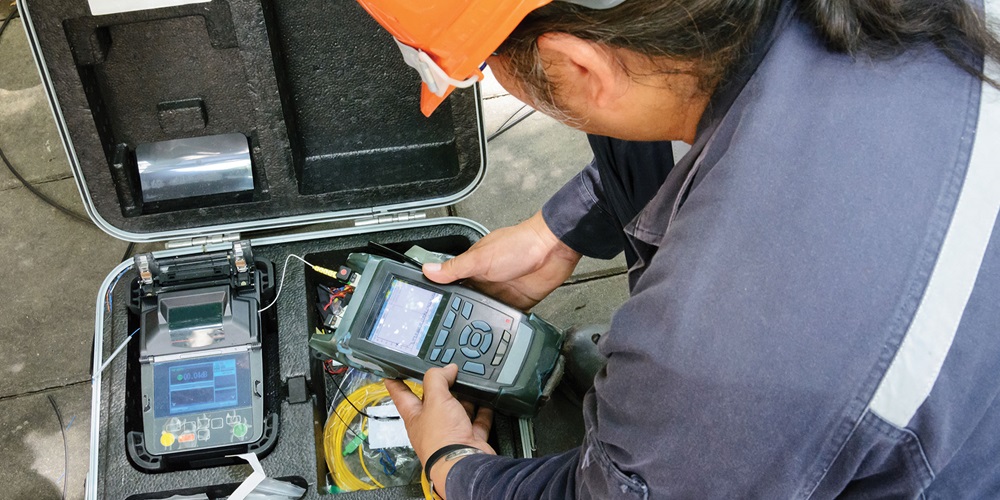The Role of Optical Fiber Testing in Ensuring Top Quality and Effectiveness in Connectivity Solutions
In today's swiftly advancing digital landscape, the importance of optical fiber testing can not be overemphasized, as it serves as a keystone for making sure the quality and performance of connectivity solutions. As innovation continues to development, the future of optical fibre screening poses fascinating challenges and possibilities that merit closer exam.
Significance of Optical Fiber Testing
The relevance of optical fibre screening can not be overstated in making certain the stability and efficiency of communication networks. As the foundation of modern-day telecoms, optical fibres help with high-speed information transmission, making their reliability essential to operational success. Checking functions as an aggressive step to recognize potential problems such as signal loss, depletion, and physical damage, which can endanger network performance.
Routine screening enables the confirmation of setup top quality and the discovery of defects that might affect information honesty - optical fibre testing equipment. By employing extensive screening protocols, network drivers can mitigate the threats connected with network failures, consisting of downtime and monetary losses. In addition, optical fibre testing guarantees conformity with sector standards and regulations, enhancing the general top quality of solution given to end-users.
Ultimately, the systematic evaluation of optical fibres contributes to the longevity and performance of interaction systems. It makes it possible for stakeholders to make enlightened choices pertaining to upkeep, upgrades, and troubleshooting. In a landscape where information is significantly important, prioritizing optical fiber screening is necessary to sustaining robust and effective connection options, thus sustaining the demands of modern digital environments.
Types of Optical Fiber Tests
Various screening techniques are employed to make certain the performance and reliability of optical fibres within communication networks. These examinations can be extensively classified right into two major types: installation examinations and maintenance examinations.
Setup examinations are carried out right away after the installation of optical fiber cable televisions to validate their performance and honesty - optical fibre testing equipment. The most usual setup examinations include Optical Time-Domain Reflectometry (OTDR) examinations, which evaluate the top quality of the fibre by identifying mistakes or breaks, and end-to-end loss tests, which determine the total optical loss from one end of the fibre to the various other
Maintenance examinations, on the other hand, are done periodically to make sure ongoing performance and detect prospective concerns in time. These consist of aesthetic evaluation, which look for physical damages or incorrect installments, and continuity examinations, which validate that the signal can pass with the fiber without interruption.
Furthermore, progressed tests such as Polarization Setting Dispersion (PMD) and Chromatic Diffusion (CD) examinations can be performed to evaluate the fibre's performance under numerous conditions. By utilizing these diverse screening techniques, technicians can preserve high criteria of high quality and dependability in optical fiber networks.
Benefits of Routine Testing
Routine screening of optical fibers plays an essential function in keeping the total efficiency and reliability of communication networks. By carrying out routine analyses, organizations can guarantee that their fiber optic installments fulfill industry standards and operate effectively. This aggressive strategy helps to identify potential weaknesses and deterioration in time, enabling for timely treatments before concerns rise.

Cost-effectiveness is one more benefit. By resolving small issues early, companies can avoid the high prices connected with major fixings or system failures. Regular screening also cultivates conformity with regulatory needs, making sure that the network sticks to necessary safety and security and performance standards.
Usual Problems Identified
Recognizing usual concerns in optical fiber networks is crucial for keeping ideal performance and reliability. Various factors can add to disturbances, including physical damage, inadequate setup practices, and environmental influences.
Physical damages, such as bends, breaks, or abrasions, can considerably weaken signal quality. Incorrect setup methods, consisting of too much tension or insufficient protecting of wires, might result in browse this site raised depletion and loss of connectivity. Furthermore, ecological factors such as temperature changes, dampness ingress, and rodent interference can jeopardize the honesty of the fiber.
Connector problems likewise regularly arise, with incorrect positioning or contamination leading to enhanced insertion loss. Splicing errors can introduce considerable signal deterioration if not implemented with accuracy.

Attending to these typical issues through normal optical fiber testing not only boosts network dependability however also optimizes total efficiency, guaranteeing that connectivity remedies continue to be robust and efficient.
Future Fads in Checking
As the demand for high-speed connectivity remains to increase, the future of optical fibre from this source screening will progressively focus on automation and advanced analytics. The assimilation of expert system (AI) and device discovering (ML) in testing processes will allow extra reliable information analysis and predictive maintenance, decreasing downtime and enhancing general network dependability. Automated testing solutions will certainly improve the inspection and qualification of fibre networks, minimizing human mistake and enhancing screening throughput.
One more substantial fad is the adoption of remote screening modern technologies. As the implementation of fiber networks expands into remote and underserved areas, remote screening capabilities will allow specialists to keep track of and identify network conditions without physical existence, consequently minimizing functional expenses and enhancing reaction times.
Moreover, there will be a shift towards more comprehensive screening criteria that incorporate not just typical loss dimensions yet additionally efficiency metrics such as latency and data transfer usage. This alternative method will facilitate better network management and optimization strategies.
As these fads advance, the optical fiber screening landscape will not just enhance the quality and efficiency of connection remedies however additionally support the expanding intricacies of contemporary communication networks.
Verdict
Finally, optical fiber testing functions as a basic element in maintaining the integrity and performance of interaction networks. By methodically evaluating numerous specifications through developed screening methods, possible problems are identified and rectified, making sure ideal performance. The recurring commitment to normal testing this hyperlink not just enhances data transmission however additionally lines up with sector requirements, cultivating dependability in network frameworks. As innovation evolves, the relevance of innovative testing strategies will remain to grow, additional progressing connectivity remedies.